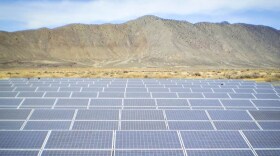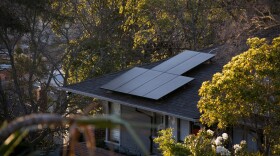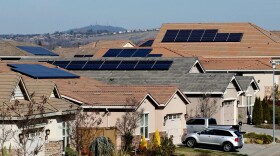-
An Oregon company is blaming President Donald Trump’s signature budget bill for more than 100 layoff notices it sent to staff two days before Christmas.
-
Tax credits for renewable energy developers will be phased out under the Republican-backed federal budget bill. Advocates say the Trump administration is going too far with strict new rules before then.
-
The 1.4 megawatt solar farm would sit just north of Ashland, off Highway 99.
-
Floating solar could help meet clean-energy goals, but researchers found ecological trade-offs vary widely, showing why each reservoir may need its own environmental review.
-
The nonprofit Energy Trust of Oregon is encouraging residents to invest in heating and cooling pumps, solar panels, before federal money goes away.
-
County leaders say the Diamond Solar project could generate millions in tax revenue and help cement Klamath County’s role in Oregon’s growing renewable energy economy.
-
PG&E and Southern California Edison routinely blow their deadlines to hook up new solar panels, an advocacy group says. But after years of complaints they have not been punished.
-
Justices told a lower court to revisit their decision to uphold cuts of 75 percent to payments for solar panel owners.
-
California spent decades building one of the greenest power grids on Earth. It ditched coal, cut fossil fuels, and built so much solar it now runs the world’s second-largest battery fleet to keep clean power flowing after dark.Now lawmakers are poised to tie that grid to coal-burning states.
-
Oregon lawmakers have passed a pair of bills to enable “microgrids” within the larger power system.
-
Clean-energy projects have new deadlines for federal tax credits and limits on foreign parts, taking aim at California’s climate agenda. Eleven major solar projects and one onshore wind project now face potential delays or cancellation.
-
Community microgrids allow groups of homes and businesses to generate their own electricity without relying on large utilities
-
Environmental groups want to revive higher payments to panel owners. But the subsidies were unfair to non-solar ratepayers, regulators say.
-
The Bonneville Power Administration has identified roughly $3 billion of transmission line and substation projects it said would be key for accommodating growing electricity demand and the expansion of wind and solar power.















